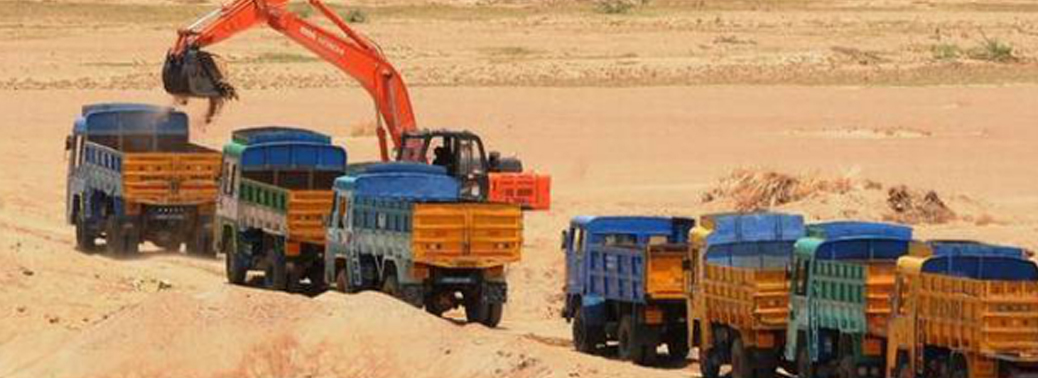GUIDELINES – SAND MINING
30, Jan 2020

Prelims level : Resources
Mains level : GS-I Distribution of Key Natural Resources across the world (including South Asia and the Indian sub-continent); factors responsible for the location of primary, secondary, and tertiary sec- tor Industries in various parts of the world (Including India)
Why in News?
- Recently, the Ministry of Environment, Forests and Climate Change (MoEFCC) has released guidelines to monitor and check Illegal Sand Mining in the country.
The Constitutional Framework of Mining Sector in India:
- The State List, mandates the state government to own the minerals located within their boundaries.
- The Central List, mandates the central government to own the minerals within the exclusive economic zone of India (EEZ). In pursuance to this Mines & Minerals (Development and Regulation) (MMDR) Act of 1957 was framed.
- The Central Government notifies certain minerals as ‘minor’ minerals from time to time for which the absolute powers for deciding on procedures of seeking applications for and granting mineral concessions, fixing rates of royalty, dead rent, and power to revise orders rest only with the State Government. For Example, building stones, gravel, ordinary clay, ordinary sand are few Minor Minerals.
The Mines and Minerals (Development and Regulation) Act, 1957:
- The Mines and Minerals (Development and Regulation) Act, 1957 has empowered state governments to make rules to prevent illegal mining, transportation and storage of minerals.
- For minerals specified in the First Schedule to the Mines and Minerals (Development and Regulation) Act, 1957approval of the Central Government is necessary.
- It contains minerals such as coal and lignite, minerals of the “rare earths” group containing Uranium and Thorium.
Enforcement and Monitoring Guidelines for Sand Mining 2020
- END to END Monitoring:The new set of guidelines focuses on the effective monitoring of sand mining from the identification of sand mineral sources to its dispatch and end-use by consumers and the general public and look at a uniform protocol for the whole country.
- Constantly monitor mining with drones and night surveillance of mining activity through night-vision drones.
- Audits in Sand Mining: States to carry out river audits, put detailed survey reports of all mining areas in the public domain.
- Transparency in Purchasing: Online sales and purchase of sand and other riverbed materials (RBM) for transparency in the process.
- Enforcement of the Rules: It gives directions to states to set up dedicated task forces at district levels.
- In cases where rivers become district boundaries or state boundaries, the districts or states sharing the boundary shall constitute the combined task force for monitoring of mined materials, mining activity and participate in the preparation of District Survey Reports (DSR) by providing appropriate inputs.
- Sustainability of Mineral Resource:Conduct replenishment study for river bed sand in order to nullify the adverse impacts arising due to excessive sand extraction.
- No riverbed mining will be allowed during the monsoon.
- The government has found that the DSRs carried out by state and district administrations are often not comprehensive enough, allowing space for illegal mining.
- The new guidelines, includes the development of an inventory, for the first time, of river bed material and other sand sources in the district.
What is Sand Mining?
- Sand Mining is an activity referring to the process of the actual removal of sand from the foreshore including rivers, streams and lakes. Sand is mined from beaches and inland dunes and dredged from ocean beds and river beds.
Impacts of Excess Sand Mining:
- River sand is preferred for construction because it requires less processing and has better quality than other sources.
- But it comes at a huge cost to the river and those living around it. Excessive sand mining can alter the river bed, force the river to change course, erode banks and lead to Flooding.
- It also destroys the habitat of aquatic animals and micro-organisms besides affecting groundwater recharge.






